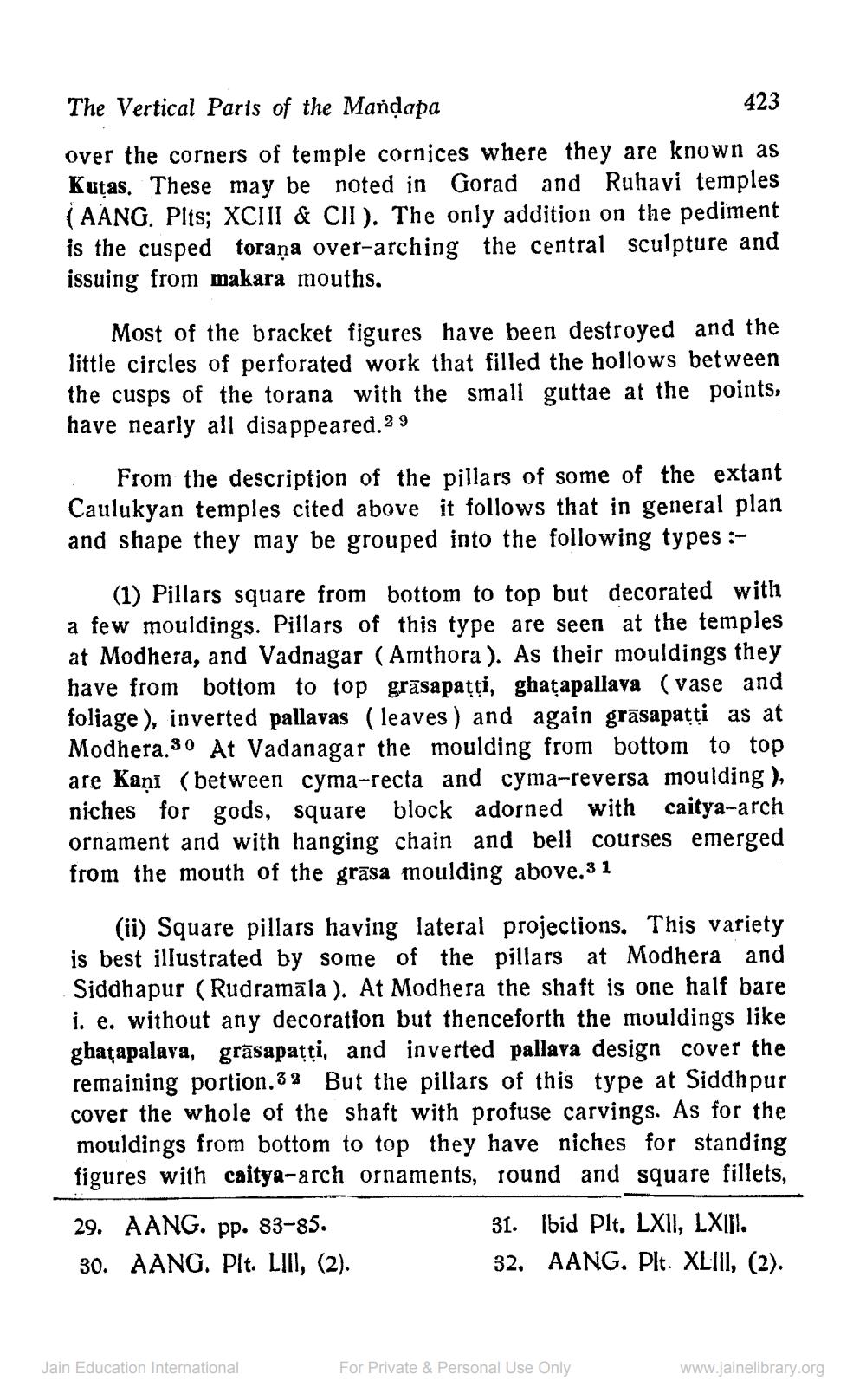________________
The Vertical Parts of the Mandapa
423 over the corners of temple cornices where they are known as Kuțas. These may be noted in Gorad and Ruhavi temples (AANG. Plts; XCIII & CII). The only addition on the pediment is the cusped toraņa over-arching the central sculpture and issuing from makara mouths.
Most of the bracket figures have been destroyed and the little circles of perforated work that filled the hollows between the cusps of the torana with the small guttae at the points, have nearly all disappeared.2 9
From the description of the pillars of some of the extant Caulukyan temples cited above it follows that in general plan and shape they may be grouped into the following types :
(1) Pillars square from bottom to top but decorated with a few mouldings. Pillars of this type are seen at the temples at Modhera, and Vadnagar (Amthora). As their mouldings they have from bottom to top grāsapatti, ghatapallava (vase and foliage), inverted pallavas (leaves ) and again grāsapatti as at Modhera. 30 At Vadanagar the moulding from bottom to top are Kaņi (between cyma-recta and cyma-reversa moulding), niches for gods, square block adorned with caitya-arch ornament and with hanging chain and bell courses emerged from the mouth of the grāsa moulding above. 3 1
(ii) Square pillars having lateral projections. This variety is best illustrated by some of the pillars at Modhera and Siddhapur (Rudramāla). At Modhera the shaft is one half bare i. e. without any decoration but thenceforth the mouldings like ghatapalava, grāsapatti, and inverted pallava design cover the remaining portion.32 But the pillars of this type at Siddhpur cover the whole of the shaft with profuse carvings. As for the mouldings from bottom to top they have niches for standing figures with caitya-arch ornaments, round and square fillets, 29. AANG. pp. 83-85.
31. ibid Plt. LXII, LXIII. 30. AANG. Plt. Lill, (2).
32. AANG. Plt. XLIII, (2).
Jain Education International
For Private & Personal Use Only
www.jainelibrary.org




